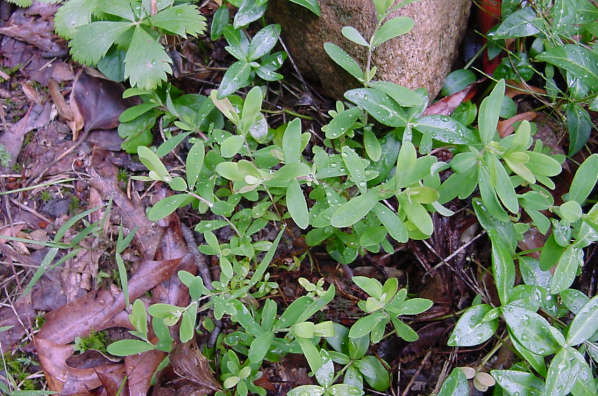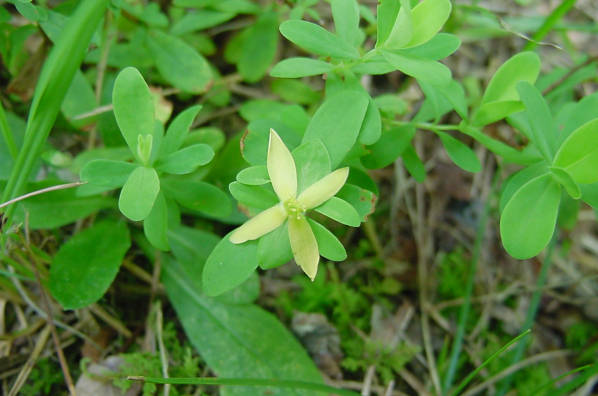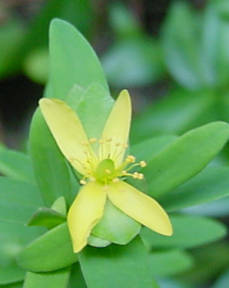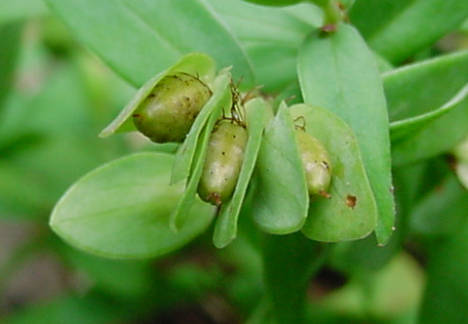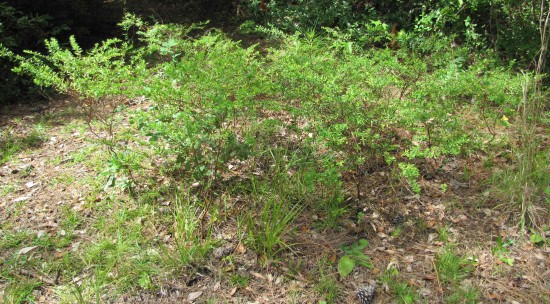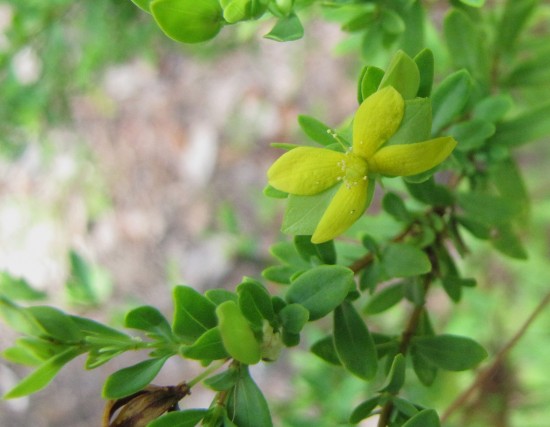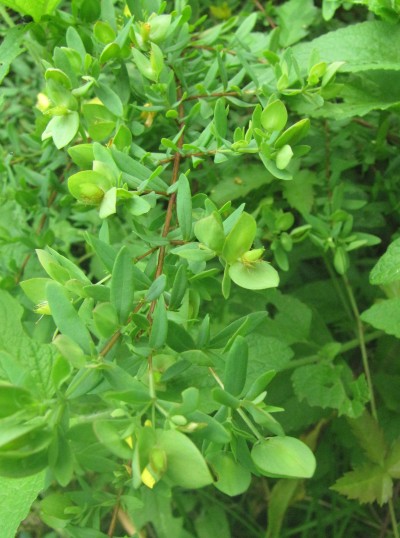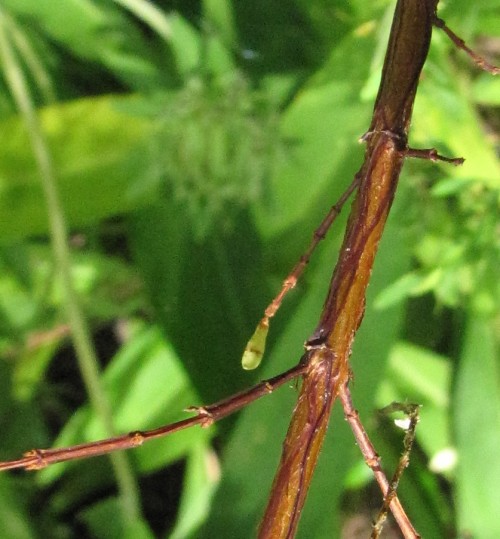NC Native Plant Society:
Plant Details
Hypericum hypericoides [= Ascyrum hypericoides]
St. Andrew's Cross
Scientific Name: |
Hypericum hypericoides [= Ascyrum hypericoides] |
|---|---|
Genus: |
Hypericum |
Species Epithet: |
hypericoides |
Common Name: |
St. Andrew's Cross |
Plant Type |
Shrub |
Life Cycle |
Perennial |
Plant Family |
Hypericaceae (St. Johns-Wort Family) |
Native/Alien: |
NC Native |
Size: |
0-1 ft., 1-3 ft. |
Bloom Color(s): |
Yellow |
Light: |
Sun - 6 or more hours of sun per day, Part Shade - 2 to 6 hours of sun per day |
Soil Moisture: |
Dry, Moist |
Bloom Time: |
May, June, July, August |
Growing Area: |
Mountains, Piedmont, Sandhills, Coastal Plain |
Habitat Description: |
Dry forests and woodlands (Weakley 2015). Sorrie (2011—A Field Guide to the Wildflowers of the Sandhills Region), states “Inhabits dry to moist pinelands, oak-hickory woods, and flatwoods, but sometimes also in wetter situations such as seepage slopes and cypress-gum swamps.” Uncommon in NC Mountains, common in Piedmont and Coastal Plain. |
Leaf Arrangement: |
Opposite |
Leaf Retention: |
Deciduous |
Leaf Type: |
Leaves veined, not needle-like or scale-like |
Leaf Form: |
Simple |
Life Cycle: |
Perennial |
Wildlife Value: |
Has some wildlife value |
Landscape Value: |
Not Recommended for home landscapes |
State Rank: |
S5: Secure (*Key) |
Global Rank: |
G5 - Secure (*Key) |
Notes: |
Weakley places the Hypericums in the Hypericaceae family |
|
Young Plant
|
|
|
Bloom About 1" across
|
|
|
Bloom Close Up
|
|
|
Seed Pods
|
|
|
Growing in its habitat Growing in dry, sandy woods, St Andrew's cross has an open structure, small delicate flowers, bright green leaves and interesting bark. Paynter, August, 2013, Wilmington |
|
|
Flower One of the 4-petaled Hypericums, St Andrew's cross has leaves that are widest in the middle and unequal pairs of sepals (1 pair is hardly noticeable) |
|
|
Leaves |
|
|
Bark |
|
Links: |
|
back to top
go to plant details search
go to plant images search
go to gallery home
back to Initial h Gallery
back to orchids
back to Carnivorous Plants
back to Trilliums

